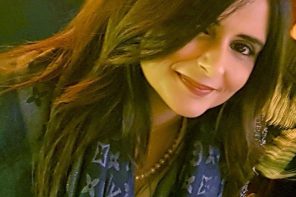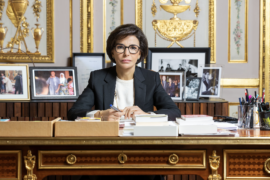Rawan Bajsair is a Saudi art therapist, artist, and author. She studied Art Therapy for both her Bachelors and Masters degrees, gained a board-certification, and has been practicing Art Therapy for the past seven years between New York and Jeddah.
In an exclusive interview Rawan talks about all things art therapy.
What got you interested in the sector of art therapy?
My road to art therapy has been loopy. I have been curious about humans, fascinated by psychology, and passionate about creativity. In many ways, the process of art making has been an unavoidably significant part of growing up. Art has continuously been a visual diary to the experiences I am encountering as a young observer. I started out studying design and fine arts then coincidentally stumbled upon this course during my undergraduate studies where I learned about the intersection of art and psychology. Since then, I have been committed to advancing my knowledge and expertise in the field.
How would you describe what an Art Therapist does on a daily basis?
Art therapy is a form of psychotherapy where we use the creative process to help clients gain insight and awareness about their psychological health and of course help them heal and cope with the issues that brought them into therapy. The role of an art therapist shifts depending on the setting and client’s needs. In a typical art therapy session, the art therapist would guide the client in both dialogue and creating art to achieve therapeutic goals.
And what makes this field different from other forms of therapy?
Art has been a way of communication since cavemen. So, using art and creativity in therapy has been natural and universal. When we go through life, our bodies register experiences that sometimes our minds are not conscious of. It reveals what our subconscious is holding, and it allows our bodies to express what we are carrying. Alternatively, art therapy is a non-threatening approach to tap into our psyche and offers a playful and creative twist to expression and problem-solving.
Is there a population that is more affected by art therapy?
All populations can benefit from art therapy. Sometimes, I find it more receptive by individuals or groups where their verbal expression is limited. I believe that in our culture, art therapy can serve as a safe mode of expression for traumatic and difficult experiences.
What kind of art do you like to employ in your work?
As an art therapist I utilize the full range of art materials. We use art in all the traditional and non-traditional ways, from finger painting to even sewing. Ultimately, the focus is more of the art-making process rather than a finished artwork.
In my private art studio, I often work with mixed media and sculptures. Most recently I have been gravitating towards watercolors and ink; where I feel like balancing between the fluid and controlled mediums.
Can you tell us more about some of the workshops you organize
I have organized and conducted workshops in various settings and with diverse clientele. For example, large to medium-sized corporations, schools and universities, as well as rehabilitation facilities and cancer patients and survivors.
Having worked abroad, do you think the Middle East is embracing the concept of art therapy?
Generally speaking, yes. What’s cool about Arabs is that they are open to adapting to new ideas. Now of course there are many misconceptions about art therapy and have an inaccurate idea about the field. For example, many people call some coloring books “art therapy”, which is totally wrong. Part of my role as an art therapist in the Middle East is to continue educating and spreading awareness about art therapy through my practice and even on social media.
How can we know if art therapy is right for us?
Art therapy serves everybody. You just need an open mind and the courage to try.
In a few words, how would you describe the power of art…
I can talk about art all day long, but nothing would be able to describe it more than experiencing it first-hand. I’ll tell you an example. Imagine a black cat. Now tell me what popped in your head? An image of black cat, or the word black cat? For most of us, an image pops up. So whether you consider yourself a visual person or not, we all store life experiences and associate things with images and all of our five senses. When you make art, you use your body and it’s a sensory experience.
Text by Victor Gee.




